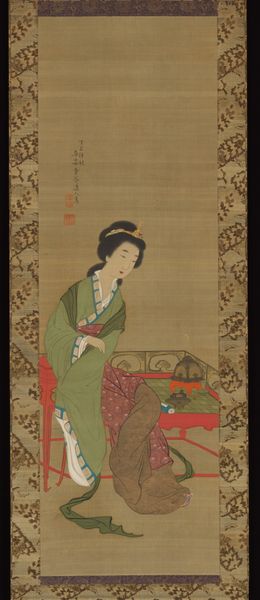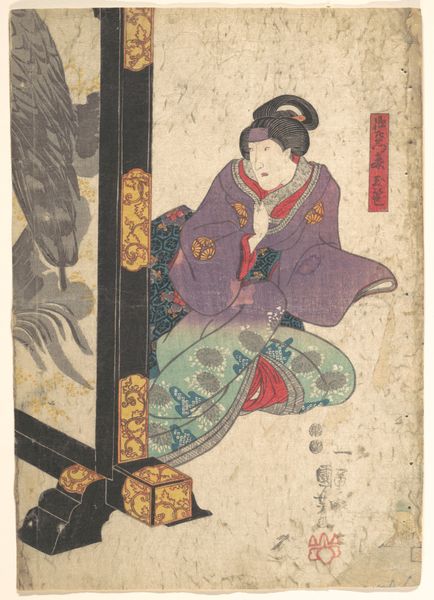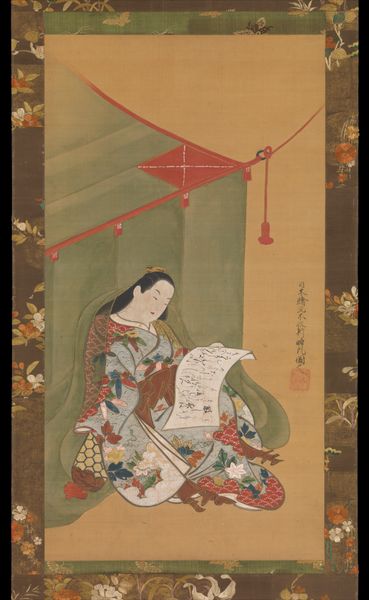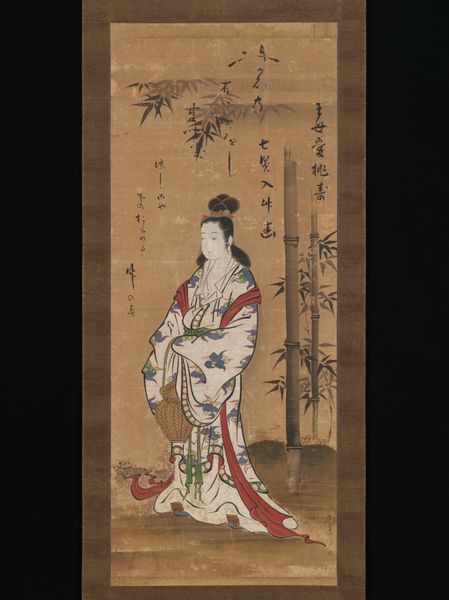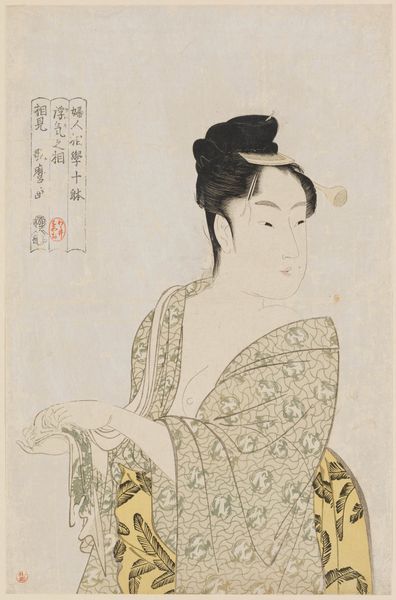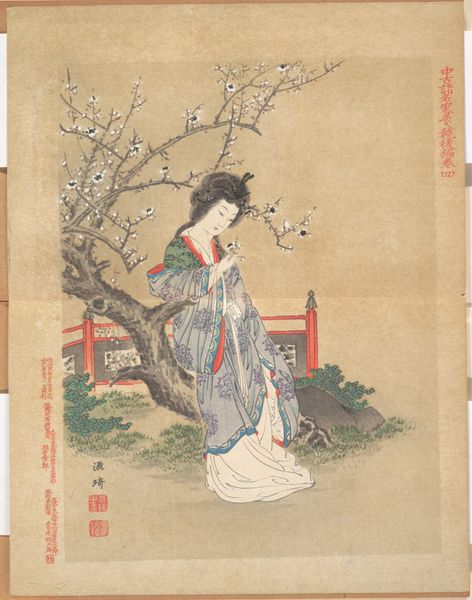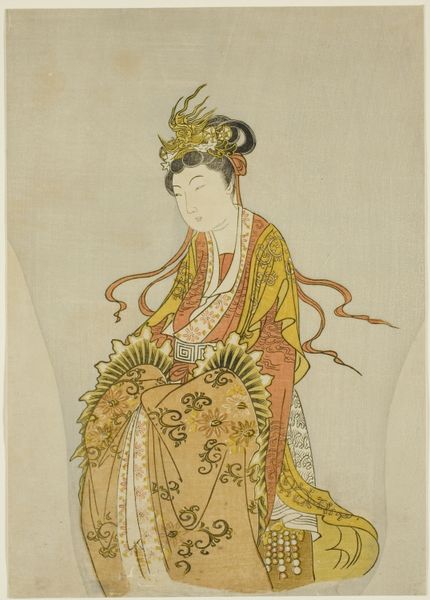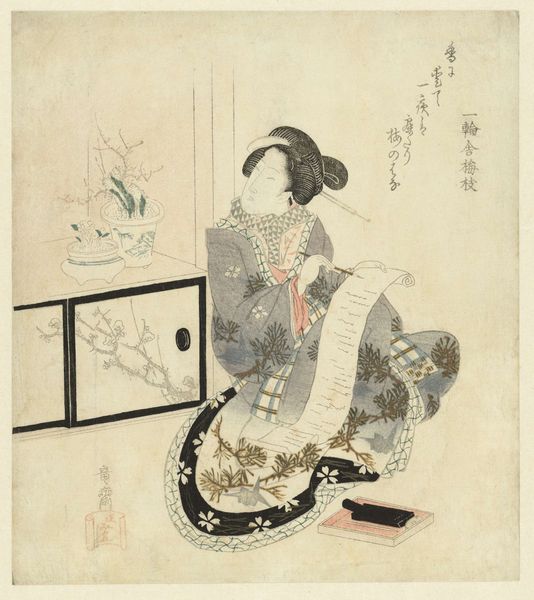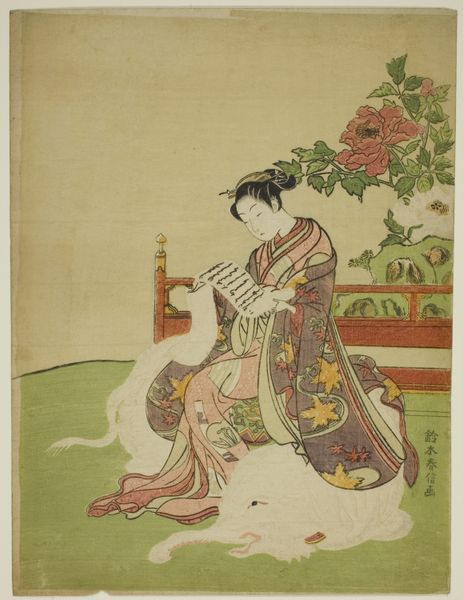
Lady Inscribing a Banana Leaf in a Garden c. late 18th century
0:00
0:00
coloured-pencil, painting, ink
#
portrait
#
coloured-pencil
#
water colours
#
painting
#
asian-art
#
landscape
#
ukiyo-e
#
japan
#
ink
#
coloured pencil
#
calligraphy
Dimensions: 39 7/8 × 18 1/8 in. (101.28 × 46.04 cm) (image)85 1/8 × 24 1/16 in. (216.22 × 61.12 cm) (mount, without roller)
Copyright: Public Domain
Curator: This is "Lady Inscribing a Banana Leaf in a Garden," dating from the late 18th century, attributed to Hayashi Rōden, and it’s made with ink and color on paper. The artist clearly utilizes traditional techniques. Editor: The painting has a delicate and quiet mood. The woman is so focused on writing. What do you see in this piece, beyond the immediate subject matter? Curator: What strikes me is the relationship between the woman’s activity and the natural materials. She is using a banana leaf as a writing surface – repurposing what’s readily available. It’s about making do with what’s at hand, connecting artistic practice to the natural world through labor and material ingenuity. The tools on the table, the way they are carefully placed, also speak to the meticulous crafting of the artist. How do you perceive the inscription process itself? Editor: I hadn't considered it like that! I initially just saw it as a demonstration of skill and artistry. But you're right; the choice of materials feels deliberate now. Banana leaves weren't exactly archival, so the act of inscription transforms from a precious creation into a utilitarian method of temporary, disposable text. Is the art really in the inscription, or in the crafting of the writing tool, or even the leaf itself? Curator: Exactly. The labor involved and the raw materials are key. The ink, the brushes, the preparation of the leaf itself - all represent a significant investment of time and skill. And, considering the period, the question of who had access to these materials, and how that impacted the type of art being produced, becomes central. What social factors are reflected in her action? Editor: It's amazing to think about the access this woman has, in order to perform and depict such a common action. Thinking about that challenges our notion of artistic creation and class divides in Edo-era Japan. Curator: Precisely! Editor: This has been illuminating; I never would have thought about the economic background or the role of available materials, instead of the action depicted in the image itself. Curator: The point is that every material tells a story about labor, accessibility, and societal values. Focusing on those details allows for a much deeper understanding.
Comments
No comments
Be the first to comment and join the conversation on the ultimate creative platform.
